Arata Isozaki, distinguished Japanese architect, city planner and theorist, has been selected as the 2019 Laureate of the Pritzker Architecture Prize, the award that is known internationally as architecture’s highest honor.
Lauded as a visionary amongst his international contemporaries, Isozaki’s forward-thinking approach, deep commitment to the “art of space,” and transnational methodology have been evidenced since the 1960s. The prolific architect has been credited with facilitating dialogue between East and West, reinterpreting global influences within architecture, and supporting the development of younger generations in the field. His precision and dexterity are demonstrated through his mastery of an intercontinental range of building techniques, interpretation of site and context, and intentionality of details.
The 2019 Jury Citation states, in part, “Possessing a profound knowledge of architectural history and theory, and embracing the avant-garde, he never merely replicated the status quo, but his search for meaningful architecture was reflected in his buildings that to this day, defy stylistic categorizations, are constantly evolving, and always fresh in their approach.”
Isozaki’s early successes in architecture transpired during the era following the Allied occupation of Japan, when the country sought to rebuild itself after the ruins of the Second World War. “I wanted to see the world through my own eyes, so I traveled around the globe at least ten times before I turned thirty. I wanted to feel the life of people in different places and visited extensively inside Japan, but also to the Islamic world, villages in the deep mountains of China, South East Asia, and metropolitan cities in the U.S. I was trying to find any opportunities to do so, and through this, I kept questioning, ‘what is architecture?’,” recalls the Laureate.
'I wanted to see the world through my own eyes, so I traveled around the globe at least 10 times before I turned thirty. I wanted to feel the life of people in different places and visited extensively inside Japan, but also to the Islamic world, villages in the deep mountains of China, South East Asia, and metropolitan cities in the U.S. I was trying to find any opportunities to do so, and through this, I kept questioning, "What is architecture?"' — Arata Isozaki
Not only did he extend efforts to physically reconstruct his native hometown with buildings including Ōita Medical Hall (1959-60) and Annex (1970-1972 Ōita, Japan), and the Ōita Prefectural Library (1962-1966 Ōita, Japan, renamed Ōita Art Plaza in 1996), but also redefined mutual exchange between eastern and western societies, allowing Japanese vision to inform European and American design, particularly in the 1980s.
“Isozaki was one of the first Japanese architects to build outside of Japan during a time when western civilizations traditionally influenced the East, making his architecture—which was distinctively influenced by his global citizenry—truly international,” comments Tom Pritzker, Chairman of Hyatt Foundation. “In a global world, architecture needs that communication.”
His buildings appear geometrically simple, but are infused with theory and purpose. The Museum of Contemporary Art, Los Angeles (1981-1986 Los Angeles, United States) was the architect’s first international commission. Though controversial and geographically challenging, the red Indian sandstone building was resolved by Isozaki’s eloquent awareness of scale through an assemblage of volumes, while employing the golden ratio and yin yang theory throughout, evoking the complementary nature of western and eastern relationships.
Isozaki’s avant-garde approach is fluid, adjusting in response to the needs and influences of each environment through a concept of interrelated time and form called “ma.” Thoughtful connectivity between global universality and local identity is made apparent through his comprehensive cross-cultural and interdisciplinary solutions that reflect deep sensitivity to specific contextual, environmental and societal needs.
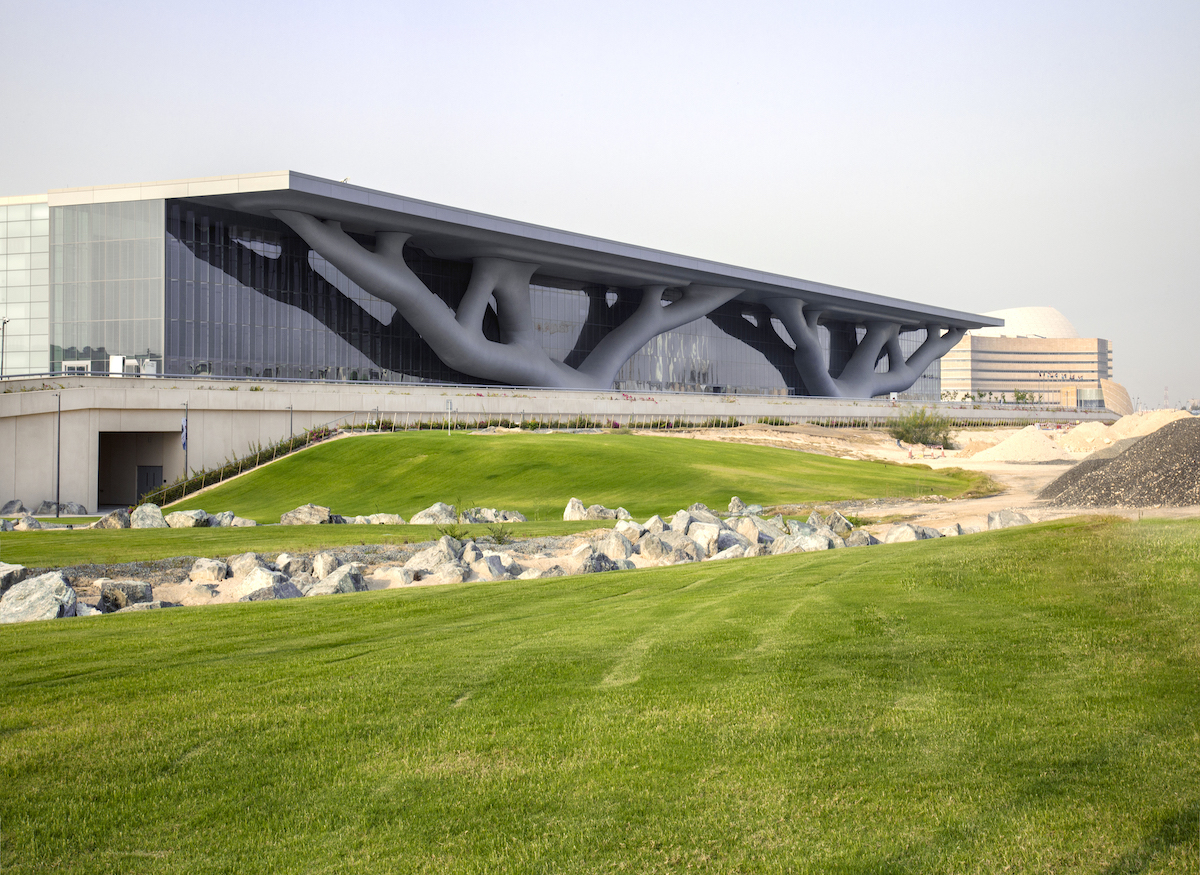 Qatar National Convention Center, photo courtesy of Hisao Suzuki
Qatar National Convention Center, photo courtesy of Hisao Suzuki
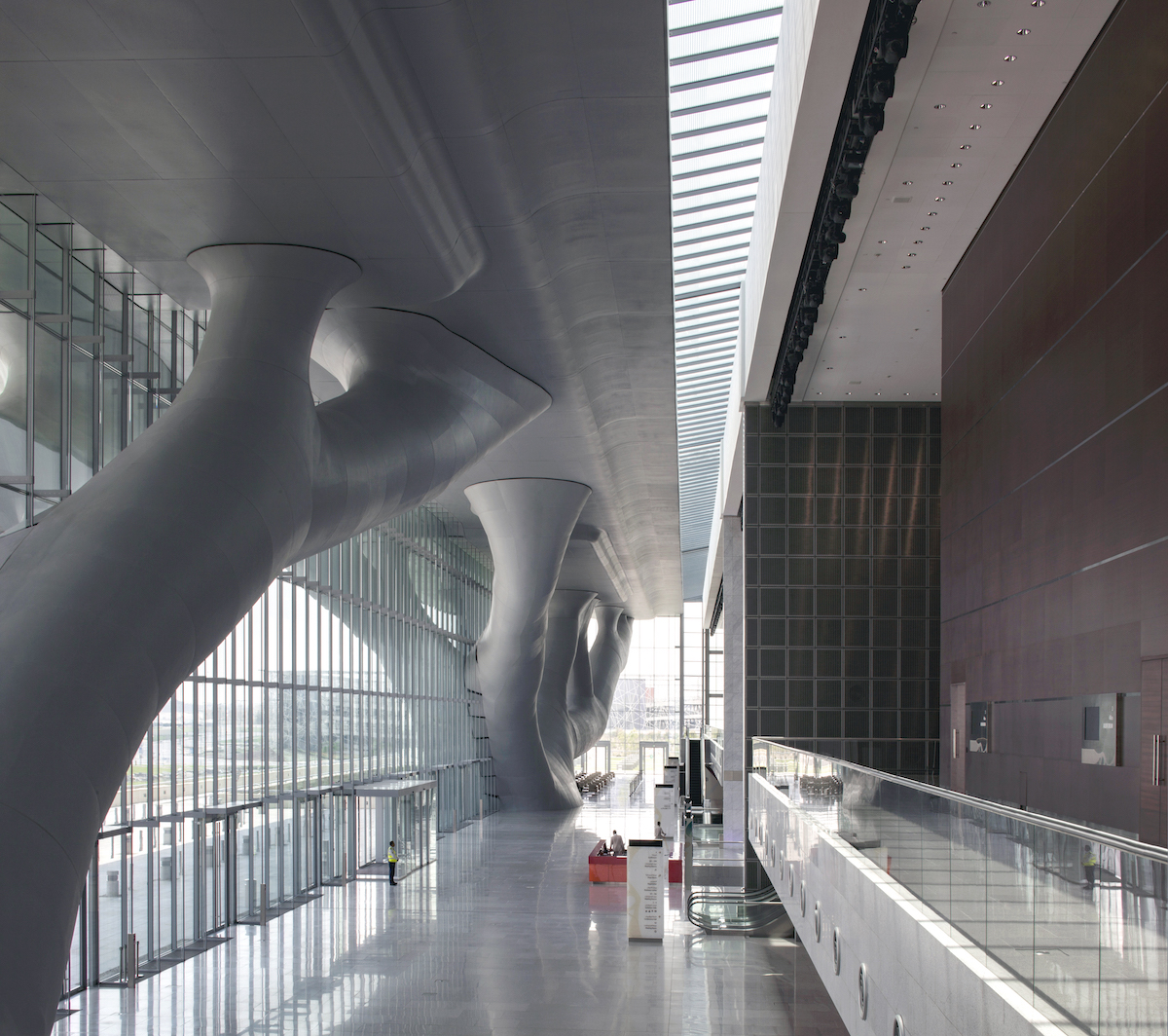 Qatar National Convention Center, photo courtesy of Hisao Suzuki
Qatar National Convention Center, photo courtesy of Hisao Suzuki
Ceramic Park Mino (1996-2002 Gifu, Japan), a ceramics museum situated in a cascading valley, preserves surrounding vegetation while serving as an extension of the topography through outdoor terraces, observation decks and overlooks, detailed with regional stoneware bricks and ceramic. Palau Sant Jordi (1983-1990 Barcelona, Spain), designed for the 1992 Summer Olympic Games, is positioned partially below ground to minimize the profile of the 17,000-person facility and instead highlight the surrounding Montjuïc hillside. The domed roof was built referencing Catalan vault techniques, while the sloped forms were inspired by those of Buddhist temples, and local materials including brick, tile, zinc and travertine were used as finishes.
“Isozaki is a pioneer in understanding that the need for architecture is both global and local—that those two forces are part of a single challenge,” says Justice Stephen Breyer, Jury Chair. “For many years, he has been trying to make certain that areas of the world that have long traditions in architecture are not limited to that tradition, but help spread those traditions while simultaneously learning from the rest of the world.”
'Isozaki was one of the first Japanese architects to build outside of Japan during a time when western civilizations traditionally influenced the East, making his architecture—which was distinctively influenced by his global citizenry—truly international. In a global world, architecture needs that communication.' — Tom Pritzker, Chairman of Hyatt Foundation
The Jury also notes the Laureate’s spirit of generosity, as he has, and continues, to promote architects at the onsets of their careers who have since gone on to become distinguished figures within the discipline.
Isozaki’s work has thus far surpassed six decades and over one hundred built works throughout Asia, Europe, North America, the Middle East and Australia. Other prominent works include the Kitakyushu City Museum of Art (1972-1974 Fukuoka, Japan), Tsukuba Center Building, (1979-1983 Ibaraki, Japan), Art Tower Mito (1986-1990 Ibaraki, Japan), Nara Centennial Hall (1992-1998 Nara, Japan), Pala Alpitour (2002-2006 Torino, Italy), Himalayas Center (2003-2013 Shanghai, China), Allianz Tower (2003-2014 Milan, Italy), Qatar National Convention Center (2004-2011 Doha, Qatar), and Shanghai Symphony Hall (2008-2014 Shanghai, China).
Isozaki is the 46th Laureate of the Pritzker Prize, and the eighth to hail from Japan. The 2019 Pritzker Prize ceremony will take place in France this May, accompanied by a public lecture in Paris.
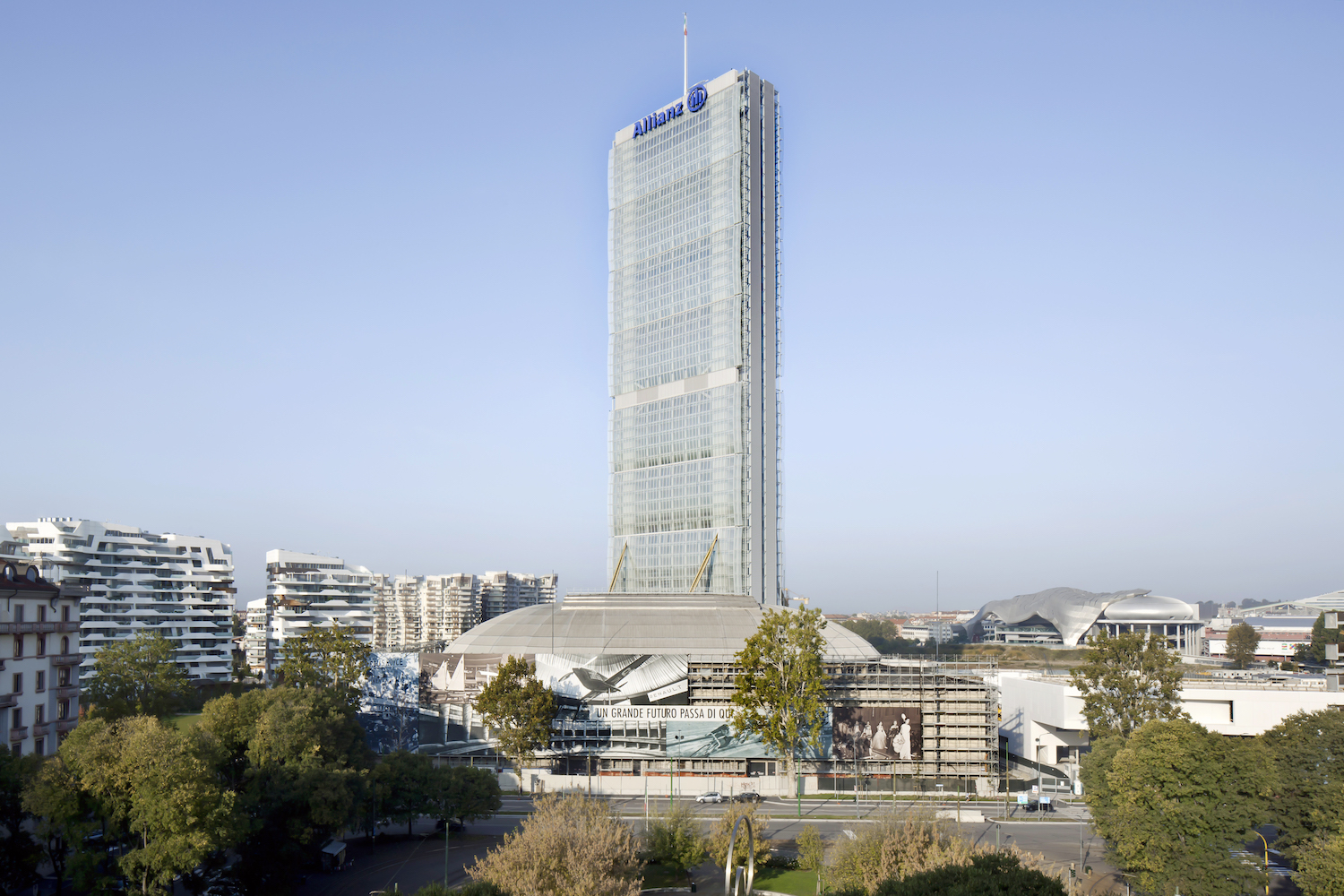 Allianz Tower, photo courtesy of Alessandra Chemollo
Allianz Tower, photo courtesy of Alessandra Chemollo
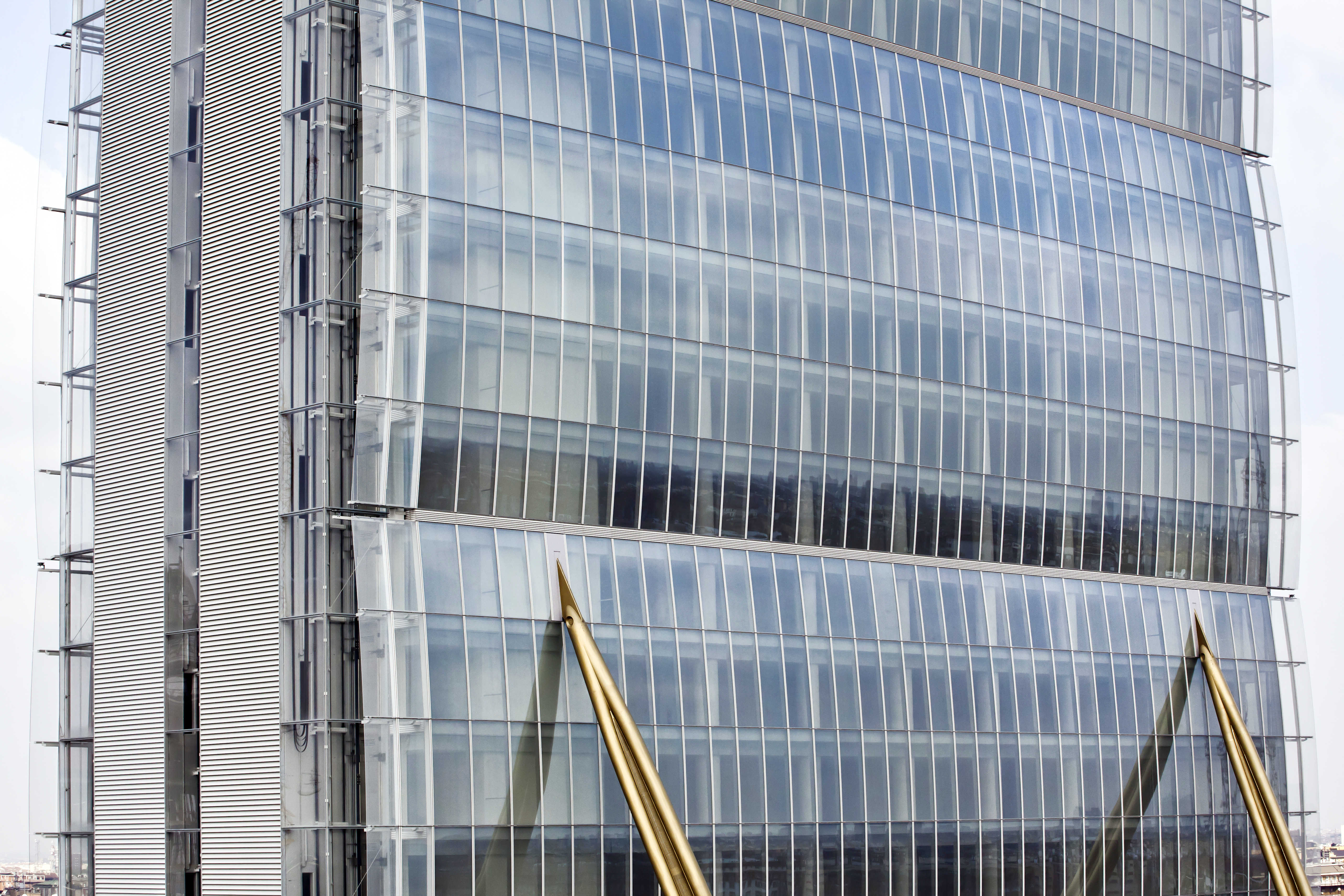 Allianz Tower, photo courtesy of Alessandra Chemollo
Allianz Tower, photo courtesy of Alessandra Chemollo
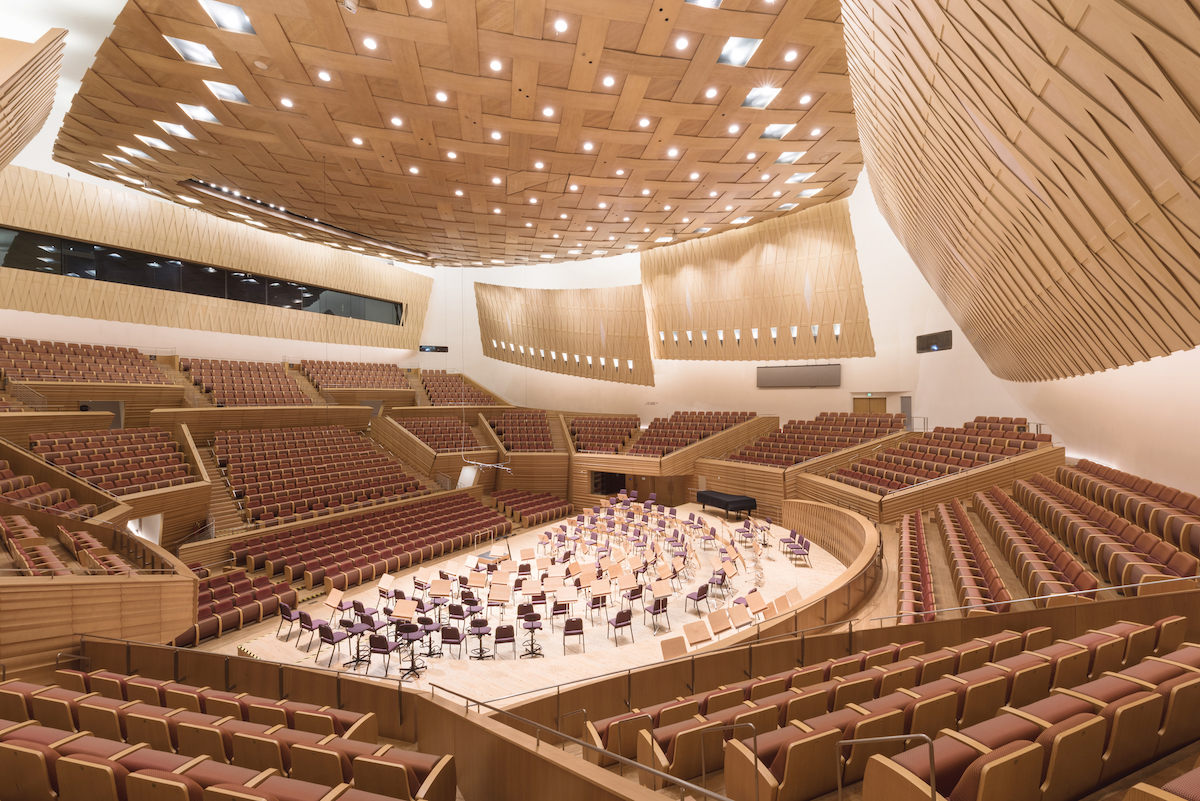 Shanghai Symphony Hall, photo courtesy of Chen Hao
Shanghai Symphony Hall, photo courtesy of Chen Hao
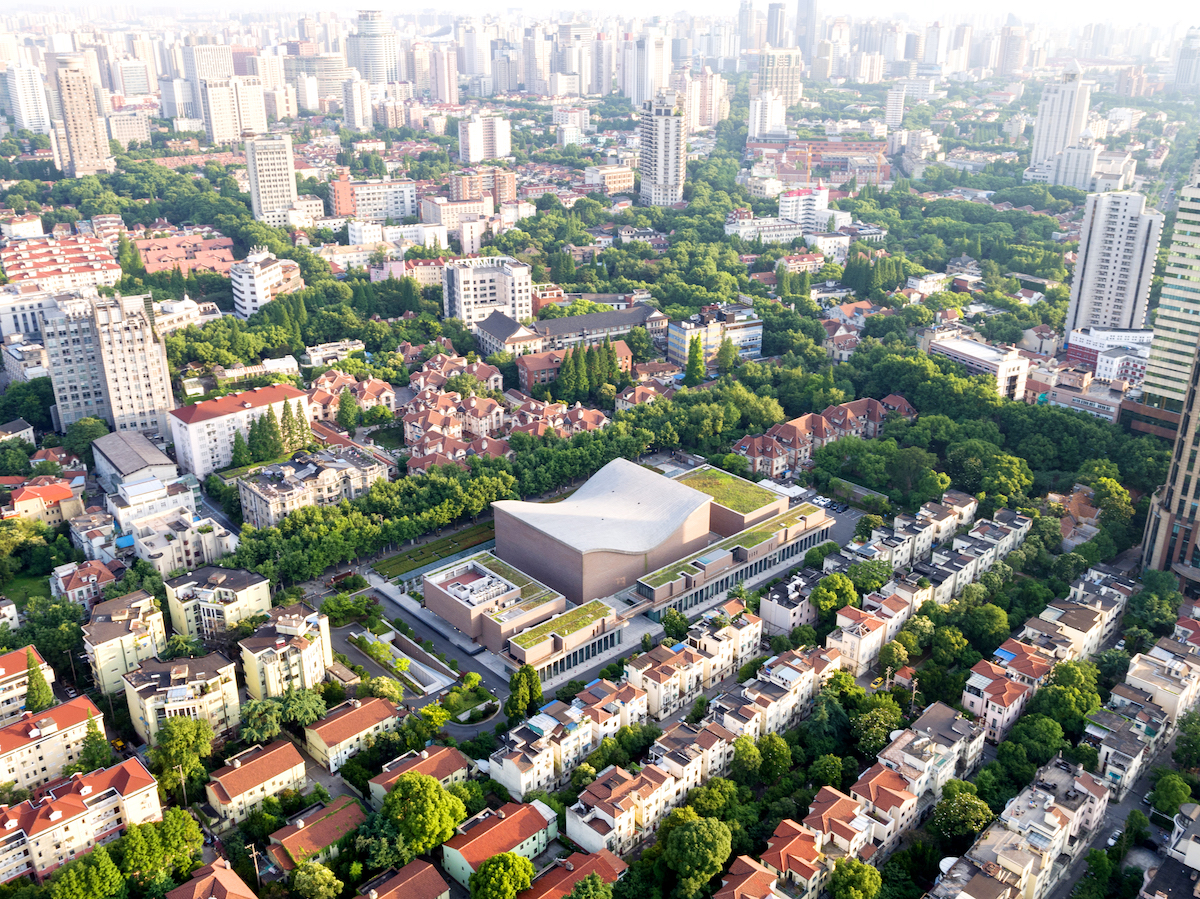 Shanghai Symphony Hall, photo courtesy of Chen Hao
Shanghai Symphony Hall, photo courtesy of Chen Hao
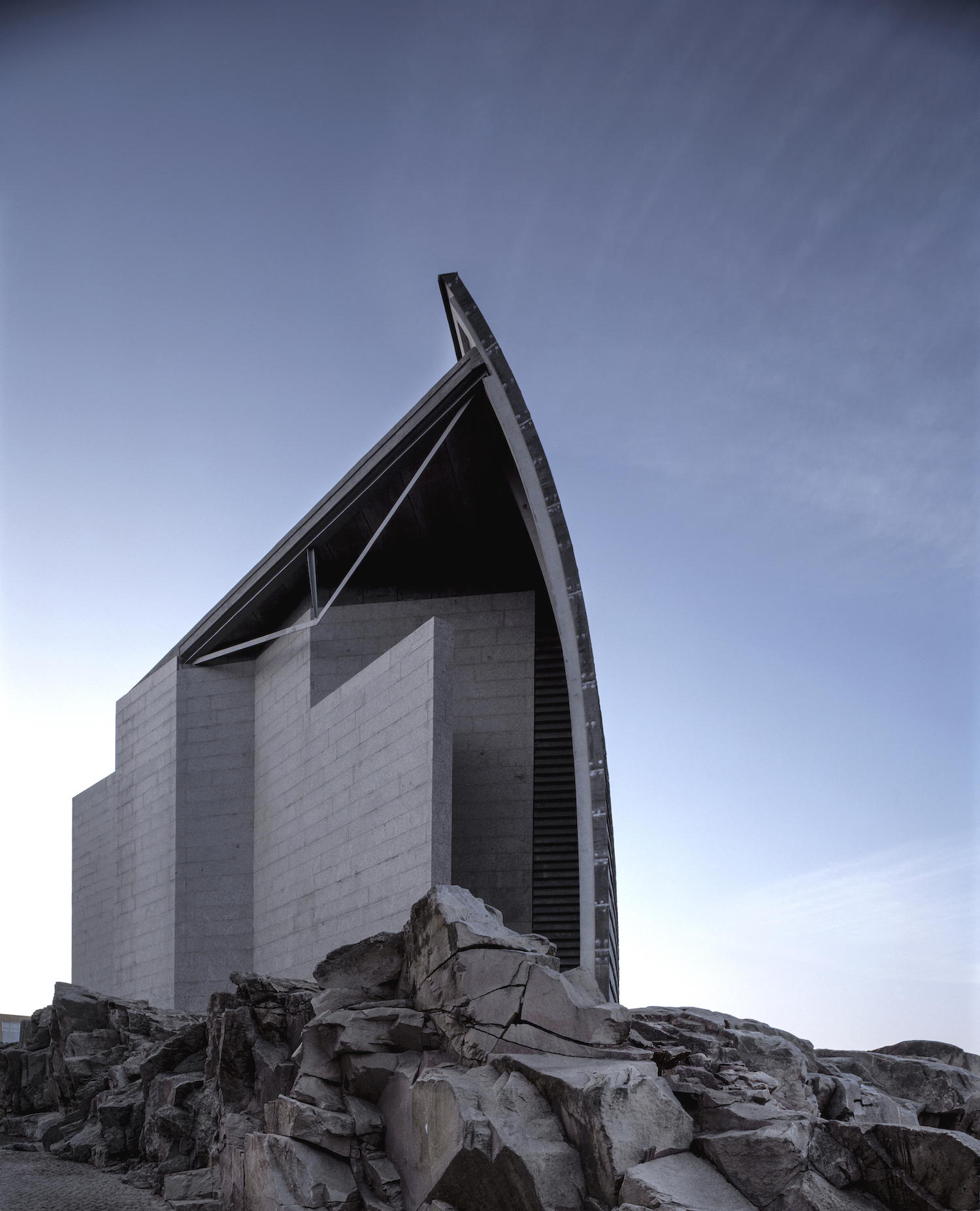 Domus: La Casa del Hombre, photo courtesy of Hisao Suzuki
Domus: La Casa del Hombre, photo courtesy of Hisao Suzuki
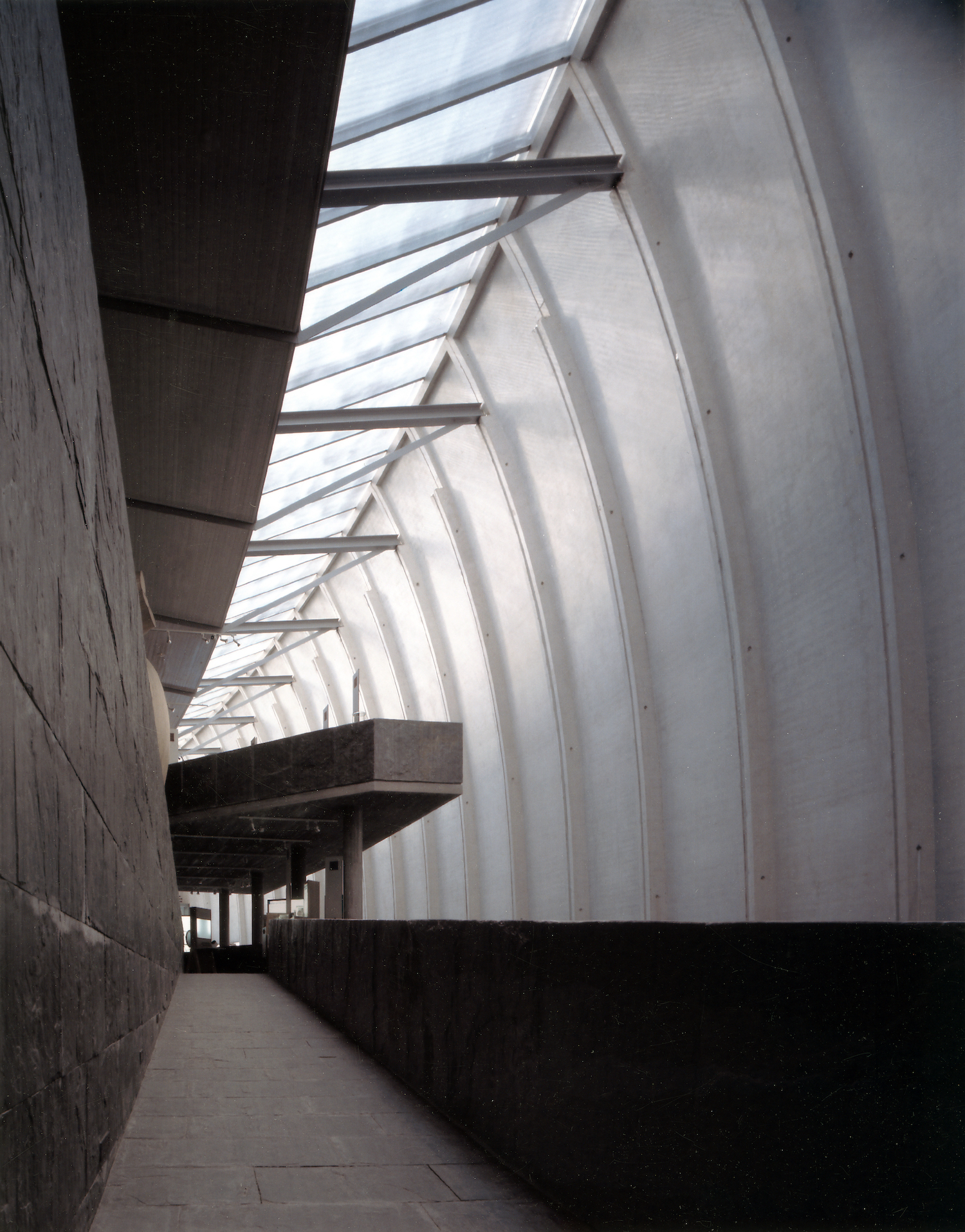 Domus: La Casa del Hombre, photo courtesy of Hisao Suzuki
Domus: La Casa del Hombre, photo courtesy of Hisao Suzuki
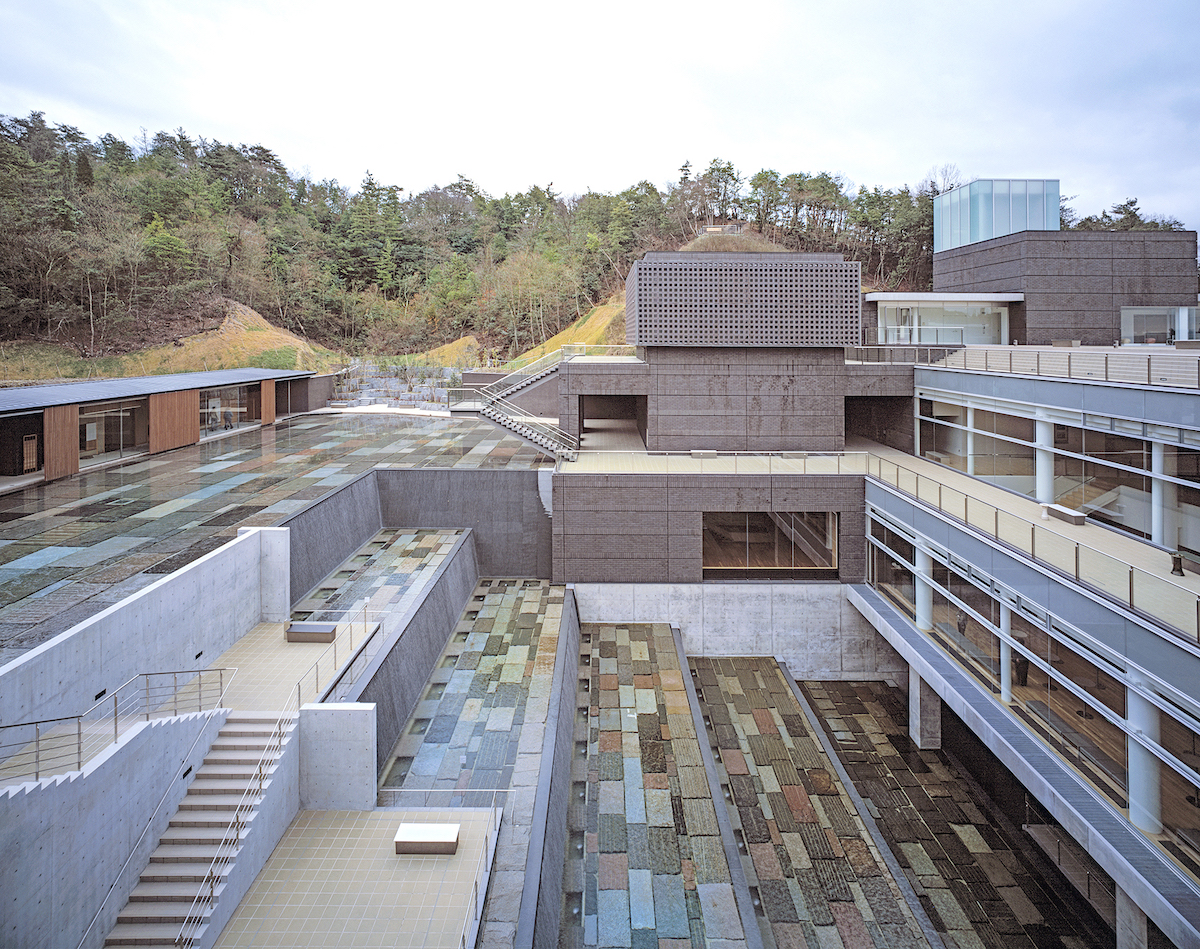 Ceramic Park Mino, photo courtesy of Hisao Suzuki
Ceramic Park Mino, photo courtesy of Hisao Suzuki
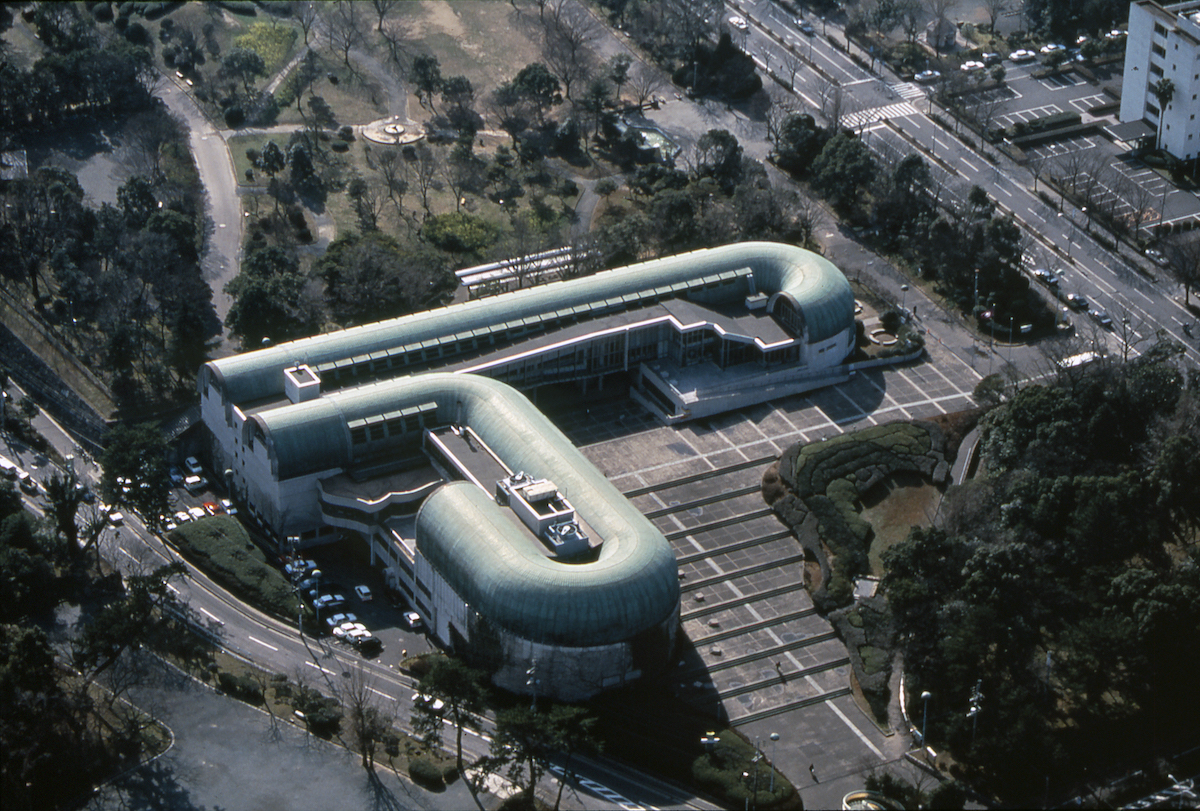 Kitakyushu Central Library, photo courtesy of FUJITSUKA Mitsumasa
Kitakyushu Central Library, photo courtesy of FUJITSUKA Mitsumasa
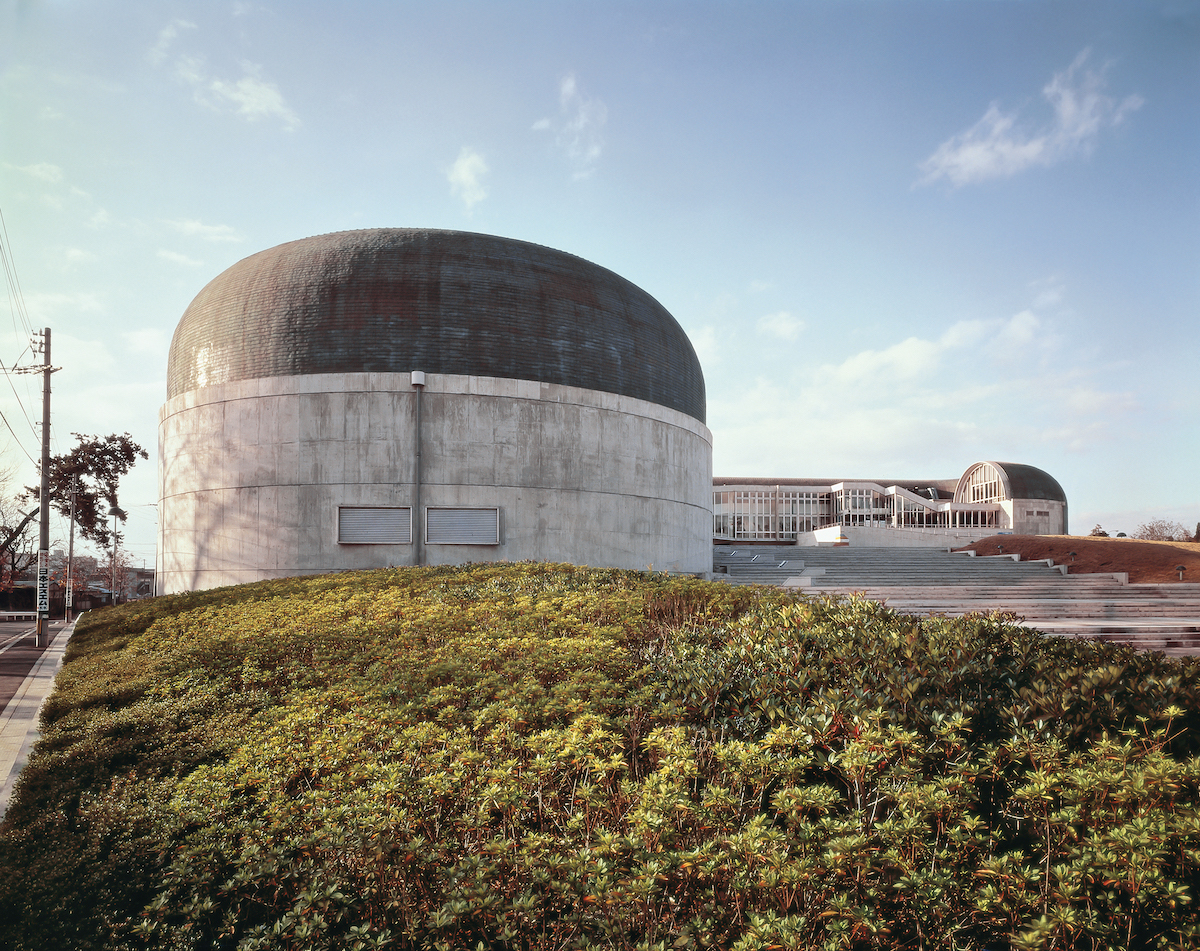 Kitakyushu Central Library, photo courtesy of FUJITSUKA Mitsumasa
Kitakyushu Central Library, photo courtesy of FUJITSUKA Mitsumasa
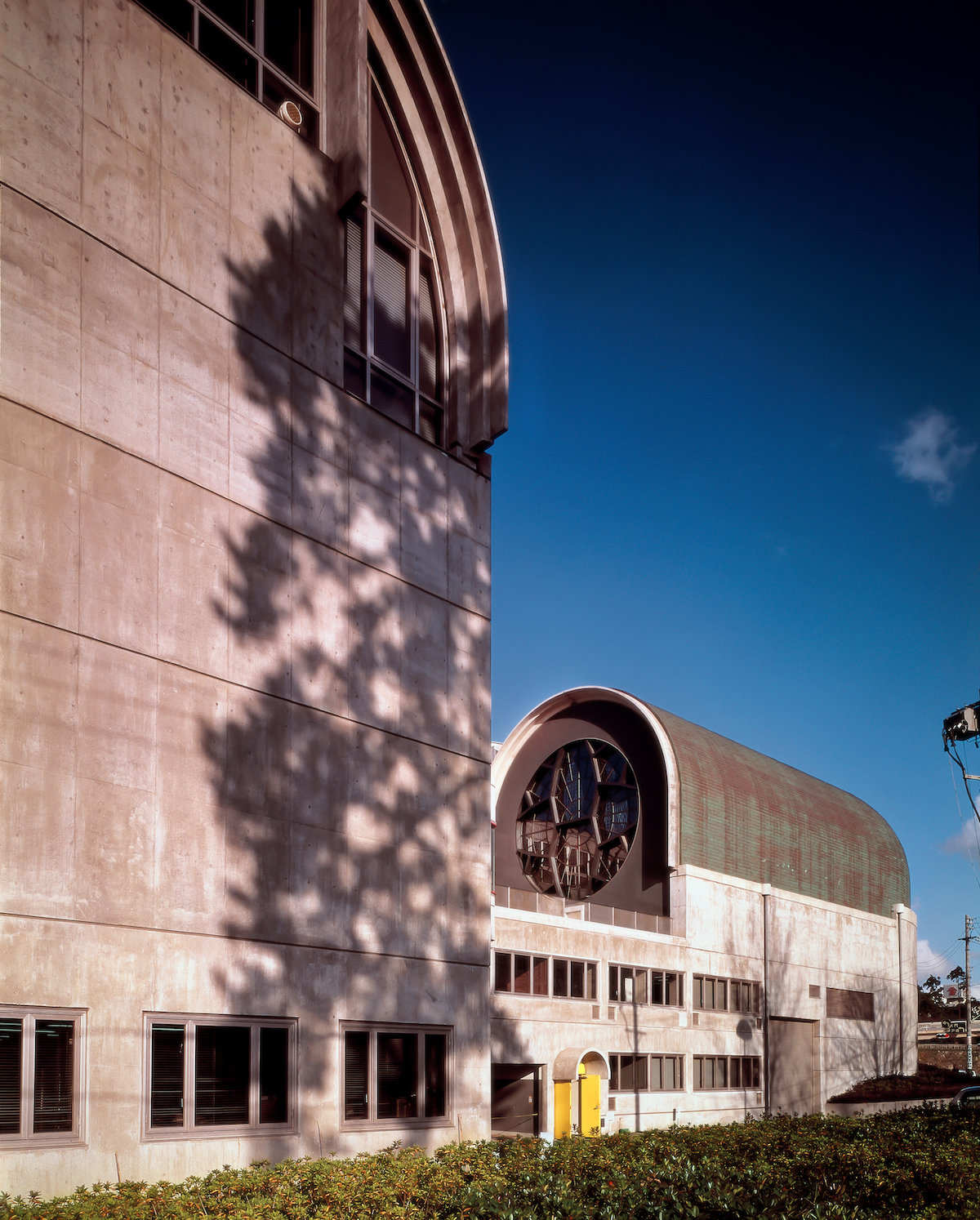 Kitakyushu Central Library, photo courtesy of FUJITSUKA Mitsumasa
Kitakyushu Central Library, photo courtesy of FUJITSUKA Mitsumasa
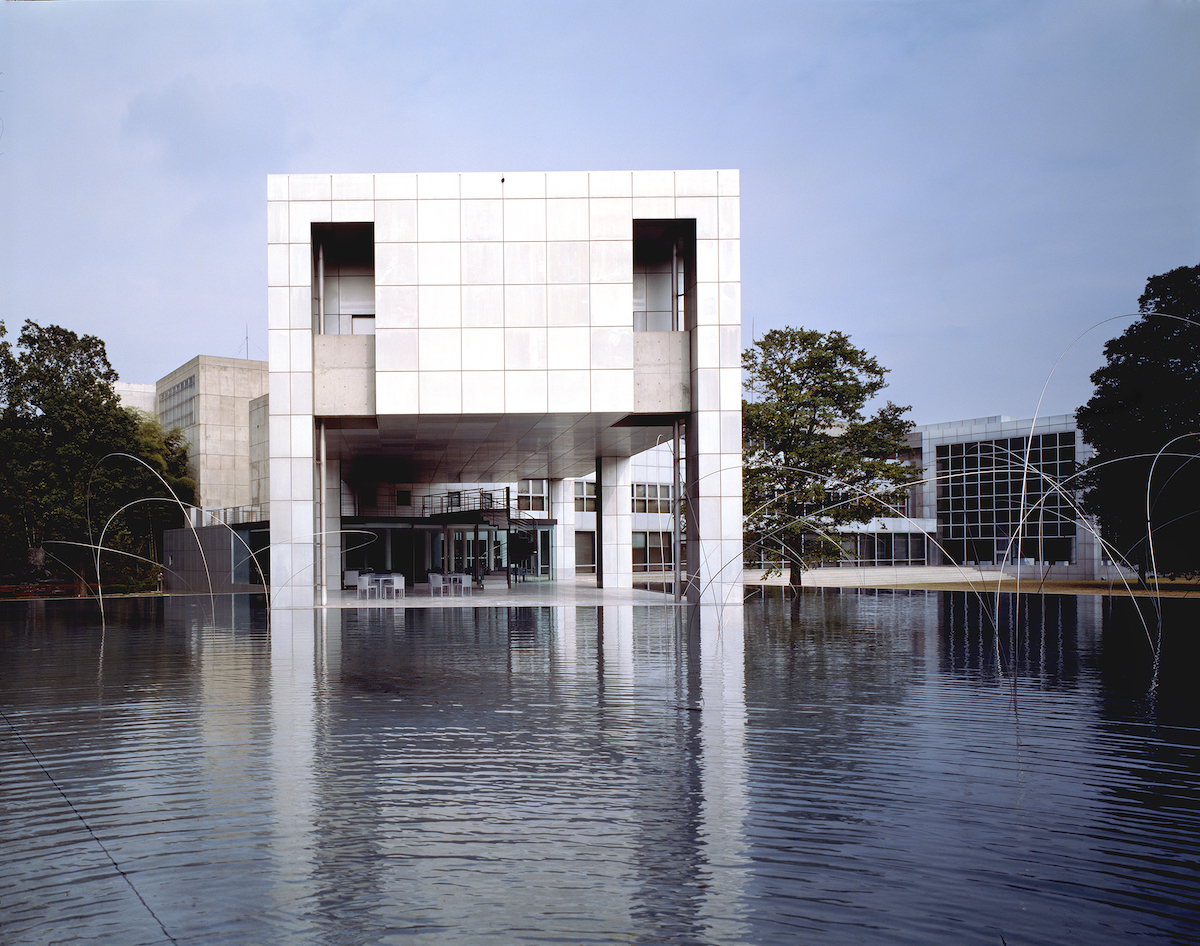 MOMA Gunma, photo courtesy of Yasuhiro Ishimoto
MOMA Gunma, photo courtesy of Yasuhiro Ishimoto
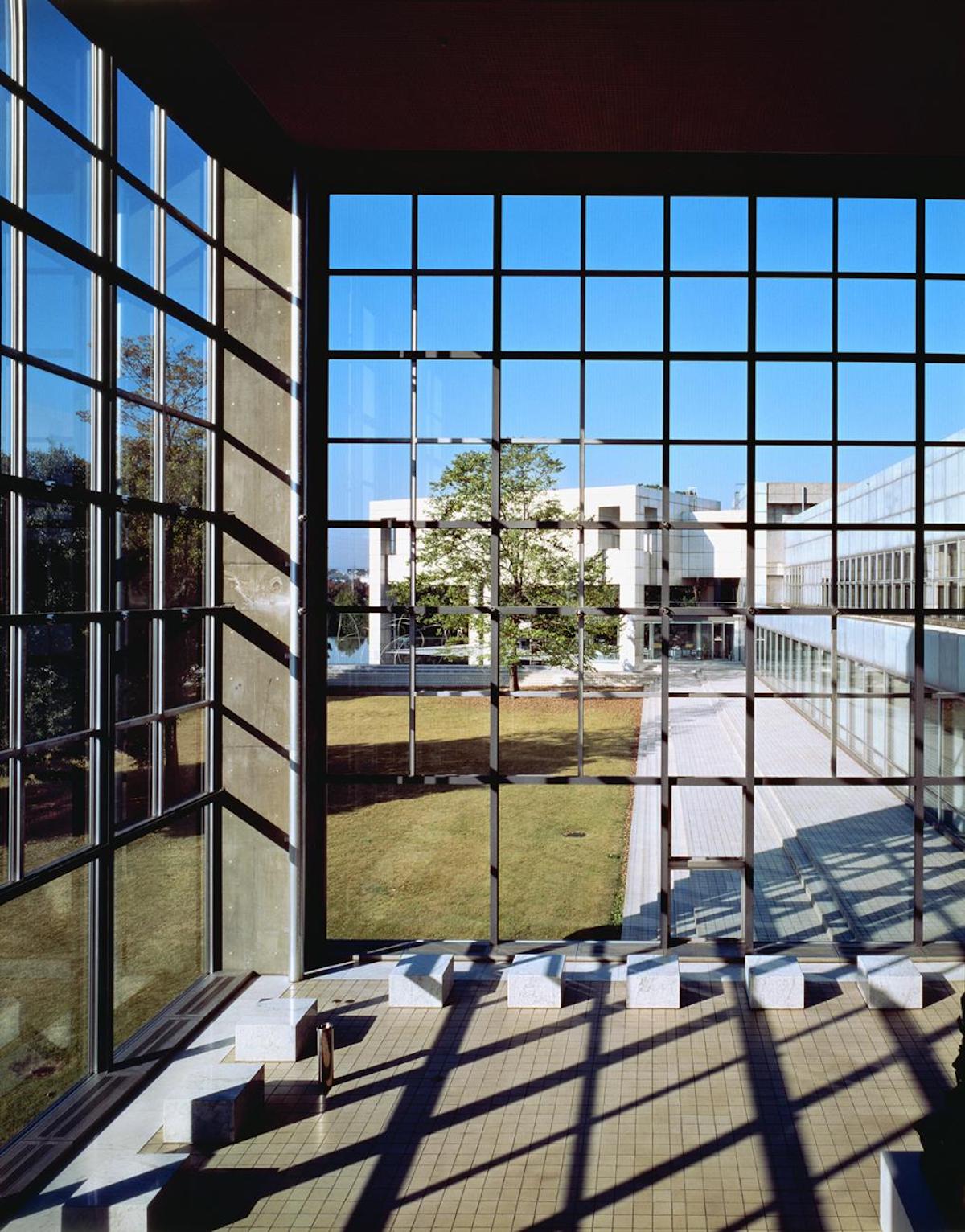 MOMA Gunma, photo courtesy of Yasuhiro Ishimoto
MOMA Gunma, photo courtesy of Yasuhiro Ishimoto
Related Stories
| Aug 11, 2010
Help Wanted: Architect for $100 million 'Discovery Park' in Union City, Tennessee
The Robert E. and Jenny D. Kirkland Foundation is identifying architects interested in designing a 50-acre, multi-million dollar complex in Union City, TN. Discovery Park of America will be a world-class, multi-faceted venue presenting exhibits and interactive experiences about history, nature, art, and science.
| Aug 11, 2010
Report: Fraud levels fall for construction industry, but companies still losing $6.4 million on average
The global construction, engineering and infrastructure industry saw a significant decline in fraud activity with companies losing an average of $6.4 million over the last three years, according to the latest edition of the Kroll Annual Global Fraud Report, released today at the Association of Corporate Counsel’s 2009 Annual Meeting in Boston. This new figure represents less than half of last year’s amount of $14.2 million.
| Aug 11, 2010
AIA to Congress: Act now to jump start building sector of economy
Tampa-based architect, Mickey Jacob, FAIA, unveiled the American Institute of Architects’ (AIA) Rebuild & Renew plan for both short- and long-term economic recovery to the House Committee on Small Business at a hearing October 7th.
| Aug 11, 2010
National Intrepid Center of Excellence tops out at Walter Reed
SmithGroup and The Intrepid Fallen Heroes Fund (IFHF), a non-profit organization supporting the men and women of the United States Armed Forces and their families, celebrated the overall structural completion of the National Intrepid Center of Excellence (NICoE), an advanced facility dedicated to research, diagnosis and treatment of military personnel and veterans suffering from traumatic brain injury.
| Aug 11, 2010
Jacobs, HDR top BD+C's ranking of the nation's 100 largest institutional building design firms
A ranking of the Top 100 Institutional Design Firms based on Building Design+Construction's 2009 Giants 300 survey. For more Giants 300 rankings, visit http://www.BDCnetwork.com/Giants
| Aug 11, 2010
Walt Disney Family Museum planned in San Francisco
Construction is under way on a new museum dedicated to the man behind the Disney empire. Set to open this fall in San Francisco, the Walt Disney Family Museum will feature 10 galleries, starting with Disney's beginnings on a Missouri farm.
| Aug 11, 2010
SAFTI FIRST hires Tim Nass as National Sales Manager
SAFTI FIRST, a leading USA manufacturer of fire rated glazing and framing systems, is pleased to announce the addition of Tim Nass as National Sales Manager. In his new role, Tim will be working closely with architects and contract glaziers in selecting the appropriate and most economical fire rated glazing solution for their project. He will also be coordinating SAFTI FIRST’s extensive network of architectural representatives throughout the United States.







